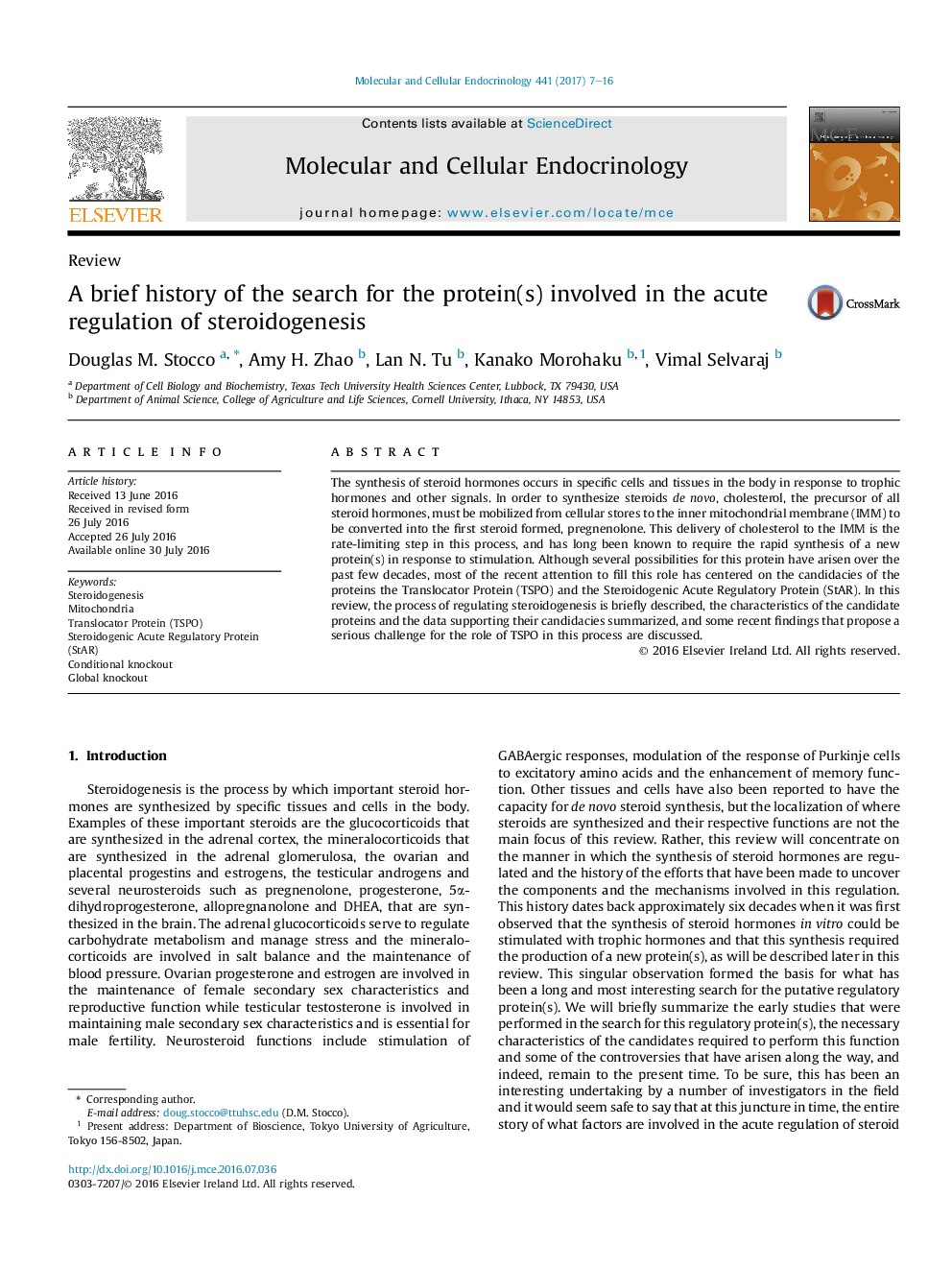| Article ID | Journal | Published Year | Pages | File Type |
|---|---|---|---|---|
| 5534225 | Molecular and Cellular Endocrinology | 2017 | 10 Pages |
â¢Steroid biosynthesis is controlled by the transfer of cholesterol to the inner mitochondrial membrane.â¢Both the Steroidogenic Acute Regulatory (StAR) and Translocator (TSPO) proteins have been implicated in this process.â¢Knockout of StAR results in a complete inability to synthesize steroids in both humans and mice.â¢Knockout of TSPO has been shown to have no effect on steroid synthesis in mice in two separate laboratories.â¢Previous in vitro studies that demonstrated an essential function for TSPO in steroidogenesis have not been reproducible.
The synthesis of steroid hormones occurs in specific cells and tissues in the body in response to trophic hormones and other signals. In order to synthesize steroids de novo, cholesterol, the precursor of all steroid hormones, must be mobilized from cellular stores to the inner mitochondrial membrane (IMM) to be converted into the first steroid formed, pregnenolone. This delivery of cholesterol to the IMM is the rate-limiting step in this process, and has long been known to require the rapid synthesis of a new protein(s) in response to stimulation. Although several possibilities for this protein have arisen over the past few decades, most of the recent attention to fill this role has centered on the candidacies of the proteins the Translocator Protein (TSPO) and the Steroidogenic Acute Regulatory Protein (StAR). In this review, the process of regulating steroidogenesis is briefly described, the characteristics of the candidate proteins and the data supporting their candidacies summarized, and some recent findings that propose a serious challenge for the role of TSPO in this process are discussed.
